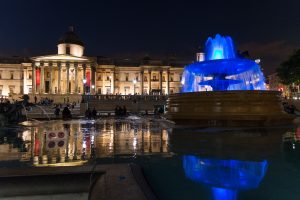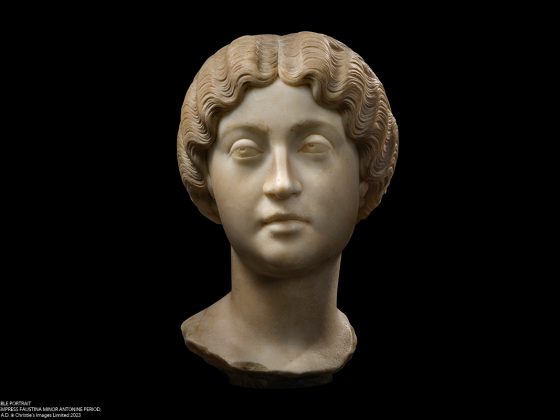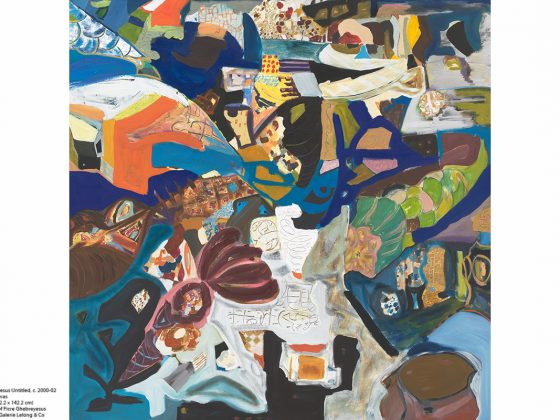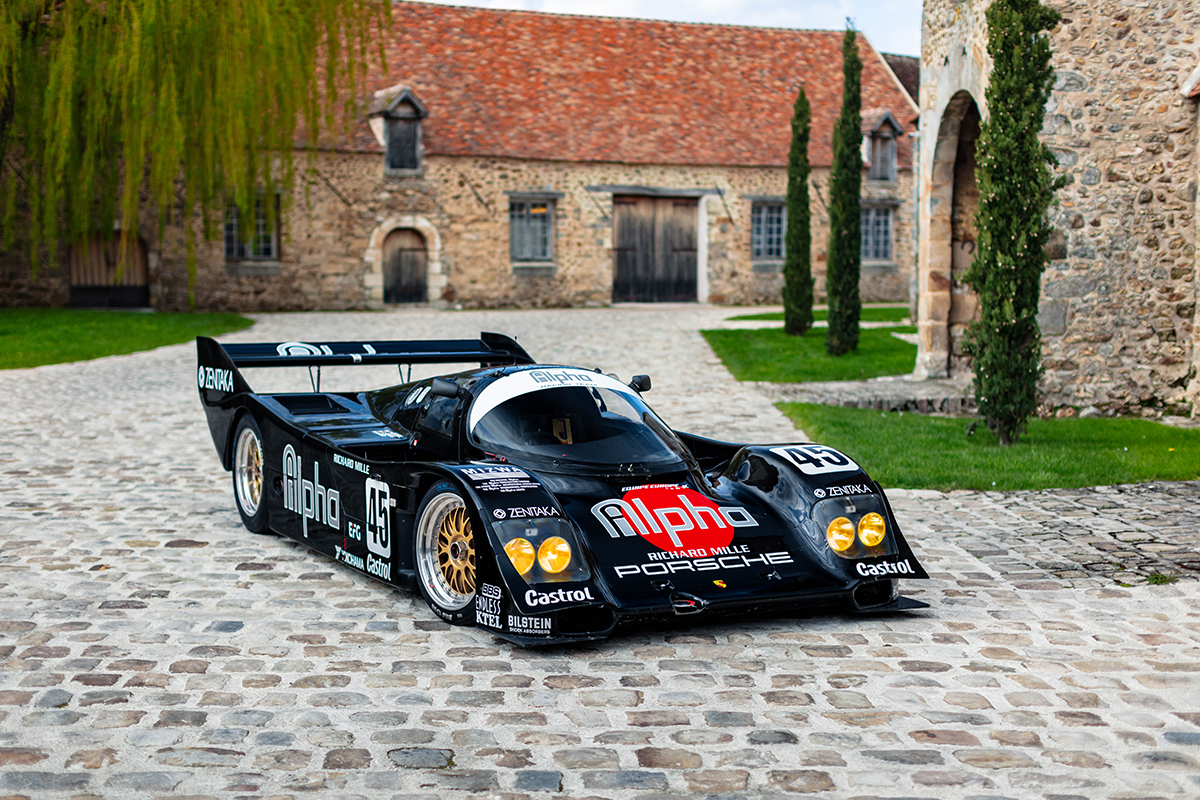The Galleria Antonacci Lapiccirella Fine Art will be showing once again this year at TEFAF Maastricht 2018 (8 – 18 March), the greatest art, antiques and design fair in the world, in the painting section, unquestionably the fair’s most important section, bringing an exceptionally interesting selection of works of art to its stand.
Tireless research, matchless skill and competence, scrupulous documentation, the aspiration to total quality, an international vision and unflagging enthusiasm are the qualities for which Francesca Antonacci and Damiano Lapiccirella are known at the highest level in the art world.

The selection of works they present this year is inspired by their gallery’s profound interest in painting from the Neoclassical era to the early 20th century.
Among the works on show stands out an unpublished painting by Antonio CANOVA on public display for the very first time at the TEFAF Maastricht 2018 fair, which constitutes a major rediscovery and marks a significant addition to our knowledge of the great sculptor’s work as a painter.
The painting in question is a “Self-Portrait of Giorgione”, 1792, an oil painting on wood, cm. 72,5 x 64, still housed in its magnificent original carved and gilded frame made in Rome, which we know to have been commissioned by Roman Senator Prince Abbondio Rezzonico, the young sculptor’s great protector and patron who was the picture’s first owner.

The most authoritative sources for Canova’s life narrated this fascinating story: Canova himself had skilfully painted the portrait on a 16th century panel painting of the Holy Family, the image of which has been traced through reflectography and infrared inspection, taking as his model a portrait of Giorgione.
Prince Rezzonico was also an accomplice in the bizarre story of the trick that Canova played on the greatest artists then present in Rome, who were invited to dine at the Senator’s home and shown this painting, which was palmed off as an original Self-portrait of Giorgione. They all adored it, thanks also to the mastery with which it had been painted, and acclaimed it to a man as an authentic work by the Venetian 16th century painter.
This exemplary story points up Canova’s love of the glorious tradition of Venetian painting, in which he also sought inspiration for his sculpture. Find more here:

Their passion for Italian painting is borne out in the first instance by a rare and precious oil painting by Giovanni BOLDINI depicting a Female Nude, dated 1890 c. , which was shown for the first time in Forlì in 2015 at the most important monographic exhibition ever devoted to this Ferrara-born artist entitled “Giovanni Boldini and the Spectacle of Modernity”, testifying to the international renown that Boldini achieved in the 19th century in Paris, then the undisputed capital of modern art. The picture is remarkable for its rich, vibrant strength, for its freedom of expression and for the dynamic and impetuous brushwork, the characteristic hallmark with which Boldini succeeded in capturing the seductive sensuality of the female body. The young model reclines with nonchalance on an unmade bed, her hair loose, her eyes closed, emanating a strong erotic charge while maintaining an ineffable, sophisticated elegance.

We would also like to highlight the enormous art historical interest of three very fine paintings by Giulio Aristide Sartorio, 1906. The panels in question constitute an important rediscovery of parts of a large decorative frieze entitled From the Fall of the Roman Empire to the Most Recent Achievements of Science which Sartorio made for the Lazio Room at the Esposizione Internazionale del Sempione in Milan in 1906. The frieze, an oil on canvas painted “en grisaille”, consisted in a cycle of panels with which Sartorio set out to illustrate “Italy’s driving energy in history, ferrying the classical ideal into the modern world” and which critics hailed as one of his most successful decorative ventures to date.

In the three panels on display, entitled From the Great Discoveries, Through the Gloomy Ages, to the Living Revival of the Race, From the Myth of Brute Forces Tamed to the Most Recent Achievements of Science and The Advent of Art and Culture respectively, Sartorio gives us a foretaste, in the development of his composition, in his sophisticated, elegant style and in the fluid and dynamic movement of his figures, of what was to be his greatest monumental work ever, the decoration of the parliamentary auditorium at the Palazzo di Montecitorio in Rome a few years later.

A large canvas entitled Spring dated 1925 by Cagnaccio di San Pietro, one of Italy’s greatest Hyperrealist artists, displays the artist’s delineated, compact and meticulous brushwork and unique, almost vitreous enamelled palette that were the manifesto of “Magical Realism,” an artistic trend which developed in Italy in the 1920s and which had a clear affinity with the Neue Sachlichkeit, or New Objectivity, and the Magischer Realismus of northern Europe. The painting, from a prestigious Italian private collection, has revealed a fascinating and hitherto unknown history: thanks to in-depth research and to an X-ray inspection performed during cleaning, it was discovered that the picture was first shown at Ca’ Pesaro in Venice in 1923 under the title Spring, while two years later the artist, who, in the meantime, had acquired a greater awareness of the philosophy underlying his work, felt the need in the prevailing climate of “Magical Realism” to eliminate the excessively obvious naturalism from the work, thus de facto turning the painting into the manifesto of this new trend in art. On that occasion he signed it and dated it 1925, and showed it from that moment on under the title The Two Sisters or The Letter.

Galleria Antonacci Lapiccirella Fine Art Created by the merger of two historic galleries that have been on the market for several generations, the Galleria Francesca Antonacci Damiano Lapiccirella Fine Art, with its prestigious headquarters in a fascinating courtyard in the centre of Rome, is a landmark for enthusiasts of “Grand Tour” paintings as well as drawings and sculptures by European artists from the late eighteenth century and the middle of the nineteenth. It is also a site for true museum-profile exhibitions. The gallery participates in the most prestigious antique shows: TEFAF Maastricht, the Paris Salon du Dessin, the Biennale des Antiquaires in Paris, the International Antiques Biennale of Palazzo Corsini in Florence, Fine Art Paris and the International Exhibition of Palazzo Venezia in Rome.
TEFAF MAASTRICHT
March 8-18, 2018
STAND 345
Antonacci Lapiccirella Fine Art
Via Margutta, 54 – 00187 Roma












